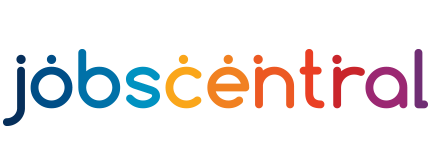
Whether at the office or at home,
scholarship interviews proceed apace. And in the current situation, it’s no
surprise if your interviewers may want to meet you virtually rather than in
reality.
Also, more and more organisations have
taken to having the first round of interviews by phone, to weed out prospective
candidates from an oversaturated playing field. It goes without saying that
you’ll want to make the best impression possible no matter the form of
interview.
You can review the essential interview prep here, but we’ve also rounded up some tips specific to phone or video interviews.
1.
DO test your equipment
Unlike
a face-to-face interview, you’ll be meeting your interviewer through the many
apps and protocols that form your connection. Therefore, it’s vital that you
check that your equipment and software is sound.
Don’t
fall prey to the “it worked the last five times, surely it’ll work now”
fallacy. As most of Singapore is now working from home, internet service
providers and the hardware that support them are being taxed like never before.
(Refer to Starhub’s recent disruption.) Glitches and errors are possible or
even to be expected.
Use a checker like Online Mic Test to make sure you can listen and be heard. For a video interview, be sure to check how you appear in your camera screen, and place your laptop/phone in a stable position (don’t balance it on your lap or hold it upright, invest in a desk or stand). Also, make sure to test your equipment on the platform you’ll be using – just because you can take a Skype call doesn’t mean everything will be fine on Google Hangouts.
2.
DO prepare your portfolio
Just
like a job interview, you will probably be required to present your portfolio
during your scholarship interview. Hence, make sure your results slips, CV,
testimonials and sample work is with you.
For
the video interview, you should save a list of links to a resume or portfolio
ready to copy and paste if required. Some interviewees prepare a browser window
with all the necessary samples and documents loaded up beforehand, so that they
can switch to the relevant screen anytime.
Even during a phone interview where the interviewer won’t be viewing your work, having it out in front of you will help you stay focused and even jog your memory about important points.
3.
DO prepare your interview space
Background
noise must be eliminated as much as possible. Neither you nor your interviewer
will appreciate having to talk over your sibling binging Netflix or mother’s
cooking prep. Let your family know that you have an important call or online
meeting so that you can be left alone.
It
also goes without saying that your background should be professional for a
video interview – no piles of laundry or messy beds in the shot when you are
giving your interview. Frame yourself in the good lightings with clean
surroundings in order to convey an image of calm, order and professionalism.
Don’t neglect the digital interview space, either! Screen sharing is common practice during video interviews, and an interviewer may ask to see your screen very suddenly. Close unnecessary tabs and windows beforehand, have a generic wallpaper, and make sure you don’t have any other chat windows open. Many an interview has been derailed when the interviewer sees a candidate asking his friends, real-time, for suitable answers.
4.
DON’T underdress
Dress
properly for the video interview as you would for a face-to-face one. For
scholarship interviews, business professional is always the dressing style of
choice. Choose solid, neutral colours and make sure your presentation is neat.
Dressing up professionally will help set your “mood” for the interview. You
will feel more professional and confident, and hence deliver a more
professional and confident interview.
We can’t emphasise this enough – don’t half-dress! Every video interviewer has a story about a well-dressed candidate who stood up to deliver a presentation or fetch a document, only to show the interview panel their eclectic choice of lounge pants.
5.
DON’T be distracted
Your
scholarship interview is an important business meeting between yourself and the
interviewers. Make sure there are no disruptions or interruptions, be they
external or internal. Let everyone know when your interview will be taking
place and for how long, and make sure they know not to interrupt you during
that time.
It’s important to not let yourself get distracted as well. Interrupting your own interview to answer the door, glance over an email, or message someone in a chat group makes you appear distracted and uninterested. We recommend turning off your phone and closing unrelated browser windows to focus better on the interview itself.
6. DON’T forget to follow up
If you
had your interview on Skype, it can be tempting to follow-up with a simple
Skype message at the end of the interview. However, that lacks respect for the
formalised process of a scholarship interview.
Stick to the
traditional e-mailed thank-you note, not more than 24 hours after the
interview. Like any other thank-you note, make sure to convey your feelings of
gratefulness and enthusiasm for the scholarship, and try to reference an
interesting point made during the interview itself.
Where across the room or on screen, a
scholarship interview is a formal and serious process. Make sure you prepare
for it accordingly, and present yourself well!
Music photo created by tirachardz - www.freepik.com



